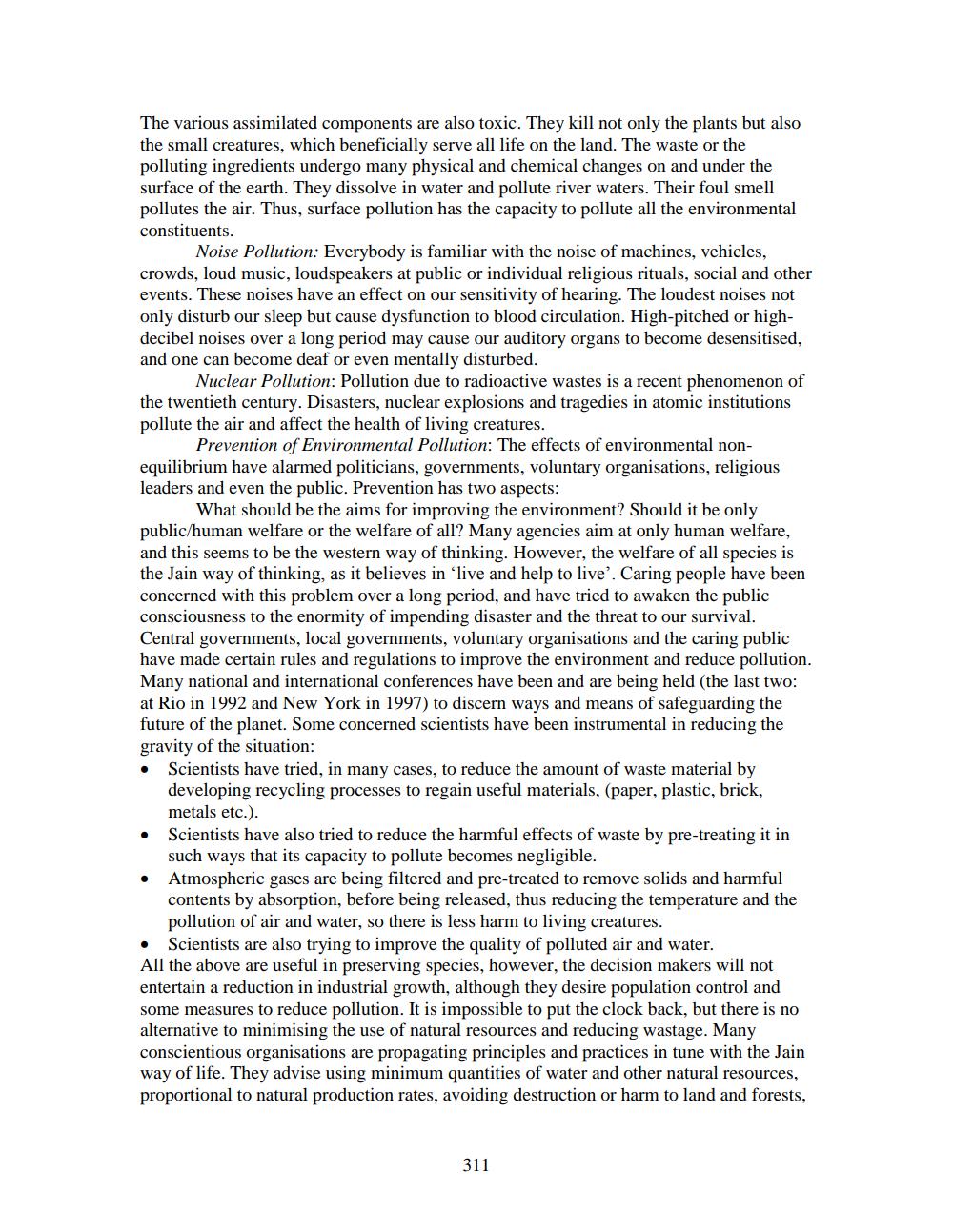________________
The various assimilated components are also toxic. They kill not only the plants but also the small creatures, which beneficially serve all life on the land. The waste or the polluting ingredients undergo many physical and chemical changes on and under the surface of the earth. They dissolve in water and pollute river waters. Their foul smell pollutes the air. Thus, surface pollution has the capacity to pollute all the environmental constituents.
Noise Pollution: Everybody is familiar with the noise of machines, vehicles, crowds, loud music, loudspeakers at public or individual religious rituals, social and other events. These noises have an effect on our sensitivity of hearing. The loudest noises not only disturb our sleep but cause dysfunction to blood circulation. High-pitched or highdecibel noises over a long period may cause our auditory organs to become desensitised, and one can become deaf or even mentally disturbed.
Nuclear Pollution: Pollution due to radioactive wastes is a recent phenomenon of the twentieth century. Disasters, nuclear explosions and tragedies in atomic institutions pollute the air and affect the health of living creatures.
Prevention of Environmental Pollution: The effects of environmental nonequilibrium have alarmed politicians, governments, voluntary organisations, religious leaders and even the public. Prevention has two aspects:
What should be the aims for improving the environment? Should it be only public/human welfare or the welfare of all? Many agencies aim at only human welfare, and this seems to be the western way of thinking. However, the welfare of all species is the Jain way of thinking, as it believes in 'live and help to live'. Caring people have been concerned with this problem over a long period, and have tried to awaken the public consciousness to the enormity of impending disaster and the threat to our survival. Central governments, local governments, voluntary organisations and the caring public have made certain rules and regulations to improve the environment and reduce pollution. Many national and international conferences have been and are being held (the last two: at Rio in 1992 and New York in 1997) to discern ways and means of safeguarding the future of the planet. Some concerned scientists have been instrumental in reducing the gravity of the situation:
Scientists have tried, in many cases, to reduce the amount of waste material by developing recycling processes to regain useful materials, (paper, plastic, brick, metals etc.). Scientists have also tried to reduce the harmful effects of waste by pre-treating it in such ways that its capacity to pollute becomes negligible. Atmospheric gases are being filtered and pre-treated to remove solids and harmful contents by absorption, before being released, thus reducing the temperature and the pollution of air and water, so there is less harm to living creatures.
Scientists are also trying to improve the quality of polluted air and water. All the above are useful in preserving species, however, the decision makers will not entertain a reduction in industrial growth, although they desire population control and some measures to reduce pollution. It is impossible to put the clock back, but there is no alternative to minimising the use of natural resources and reducing wastage. Many conscientious organisations are propagating principles and practices in tune with the Jain way of life. They advise using minimum quantities of water and other natural resources, proportional to natural production rates, avoiding destruction or harm to land and forests,
311




